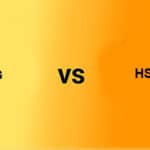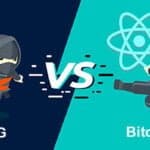Major organizations want to facelift their business and production processes as the corporate world grows. With the quickly changing corporate environment, large organizations are increasingly attempting to grow. Discrepancies will always occur if you don’t know which model to use. Agile and lean are the two most utilized paradigms in the software business. They are made with the benefits and drawbacks in mind.
Agile vs Lean
The main difference between Agile and Lean is that the Agile Model is similar to creating something new for the first time and only once. In contrast, the Lean Model is similar to creating the same thing over and over again on the same item.

The Agile Manifesto is where Agile began. This manifesto, formally known as the Manifesto for Agile Software Development, provides a brief outline of best practices from various software development frameworks such as Scrum and Kanban.
Lean is a set of procedures and activities that are used to operate a company methodically. Lean Manufacturing is a systematic production method that minimizes waste within manufacturing processes to enhance productivity, efficiency, and effectiveness.
Comparison Table Between Agile and Lean
| Parameters of Comparison | Agile | Lean |
|---|---|---|
| Philosophy | Agile is a methodology or set of principles primarily applied to software development and project management. | Lean is a broader business philosophy applied to various industries, including manufacturing, services, and healthcare. |
| Focus | Agile focuses on iterative and incremental development, customer collaboration, and responsiveness to change. | Lean focuses on eliminating waste, optimizing processes, and delivering maximum customer value while minimizing resource use. |
| Origins | Originated in the early 2000s as a response to traditional project management approaches. | Originated in manufacturing, particularly from the Toyota Production System, and expanded to other industries. |
| Iterations | Agile divides projects into small, time-boxed iterations, called “sprints” or “iterations.” | Lean emphasizes continuous improvement but doesn’t prescribe specific iteration cycles. |
| Customer Collaboration | Agile prioritizes ongoing collaboration with customers and stakeholders for feedback and requirements refinement. | Lean also values customer value but focuses on improving processes rather than direct collaboration with customers. |
| Waste Reduction | Agile doesn’t explicitly address waste reduction but aims to deliver working software efficiently. | Lean is all about waste elimination in processes, including overproduction, defects, waiting times, and more. |
| Application Range | Predominantly used in software development and project management. | Applicable to manufacturing, services, healthcare, and other industries beyond project management. |
| Frameworks | Common frameworks include Scrum, Kanban, and Extreme Programming (XP). | Lean is a philosophy but can be implemented with various tools and techniques like Value Stream Mapping. |
What is Agile?
Agile is a set of principles and practices for software development and project management that prioritize flexibility, collaboration, and customer satisfaction. It emerged in the early 2000s as a response to the limitations of traditional, plan-driven project management approaches.
Key aspects of Agile include:
- Iterative and Incremental Development: Agile projects are divided into small, manageable iterations, called “sprints” or “iterations.” A functional piece of software is developed during each iteration, allowing for frequent feedback and adaptation.
- Customer Collaboration: Agile strongly emphasizes collaboration with customers and stakeholders. Their feedback is incorporated throughout the project, ensuring the final product meets their needs.
- Responding to Change: Agile welcomes changing requirements, even late in development. It recognizes that customer needs and market conditions can evolve, and the project should be adaptable.
- Individuals and Interactions: Agile values individuals and their interactions over processes and tools. Effective communication and teamwork are crucial.
- Working Software: The primary measure of progress in Agile is working software. This focus on delivering tangible results ensures that the project stays on track and provides value.
- Self-Organizing Teams: Agile teams are self-organizing, with members collectively making decisions and taking ownership of tasks.
Common Agile frameworks include Scrum, Kanban, and Extreme Programming (XP). These frameworks provide specific guidelines and practices to implement Agile principles effectively.
Agile has become widely adopted in software development and other industries where projects benefit from adaptability, collaboration, and customer-centric approaches. It allows organizations to deliver high-quality products faster while remaining responsive to changing customer needs and market dynamics.
What is Lean?
Lean is a systematic and holistic business philosophy and management approach aimed at optimizing processes, eliminating waste, and delivering maximum customer value while using resources efficiently. Originating in manufacturing, particularly from the Toyota Production System, Lean principles have expanded to various industries, including healthcare, services, and software development.
Key principles and concepts of Lean include:
- Value: Lean begins by identifying what the customer perceives as value and focusing resources on activities that directly contribute to this value.
- Waste Reduction: It emphasizes the identification and elimination of waste in processes, including overproduction, defects, waiting times, unnecessary transportation, inventory, and underutilized employee skills.
- Continuous Improvement (Kaizen): Lean promotes a culture of continuous improvement, encouraging employees at all levels to suggest and implement changes to enhance efficiency and quality.
- Pull Systems: Lean uses pull systems, such as Just-In-Time (JIT), to produce goods or deliver services only when there is demand, reducing excess inventory and waste.
- Respect for People: Lean values the skills, creativity, and contributions of employees, emphasizing their involvement in problem-solving and decision-making.
- Value Stream Mapping: Lean employs value stream mapping to analyze and optimize the entire process from customer request to product or service delivery.
Lean principles have a wide-ranging impact on organizations, improving quality, reducing costs, shortening lead times, enhancing customer satisfaction, and fostering a culture of continuous learning and improvement. It has evolved beyond manufacturing into a philosophy applicable to various sectors, helping organizations remain competitive and customer-focused in an ever-changing business landscape.
Main Differences Between Agile and Lean
Agile:
- Methodology Focus: Agile is a methodology or set of principles for software development and project management.
- Iterations: It emphasizes short development cycles called “sprints” or “iterations” to adapt to changing requirements.
- Customer Collaboration: Agile prioritizes customer collaboration and welcomes changes in project scope.
- Emphasis on Individuals and Interactions: It values individuals and their interactions over processes and tools.
- Documentation: Agile promotes minimal documentation but focuses on working software as the primary measure of progress.
- Scrum and Kanban: Common frameworks within Agile are Scrum and Kanban.
- Flexibility: Agile is more adaptable to frequent changes in requirements.
Lean:
- Philosophy Focus: Lean is a broader business philosophy that originated in manufacturing and applied to various industries.
- Continuous Improvement: Lean focuses on continuous improvement and waste reduction.
- Value Stream: It emphasizes identifying and optimizing value streams or processes to eliminate inefficiencies.
- Customer Value: Lean aims to deliver maximum customer value while minimizing resources.
- Elimination of Waste: Lean identifies and eliminates waste in processes, including overproduction, defects, and delays.
- Just-In-Time (JIT): Lean incorporates JIT principles to deliver products or services exactly when needed.
- Kaizen: Continuous improvement, known as Kaizen, is a core Lean concept.
- Application: Lean can be applied to manufacturing, services, healthcare, and more.















